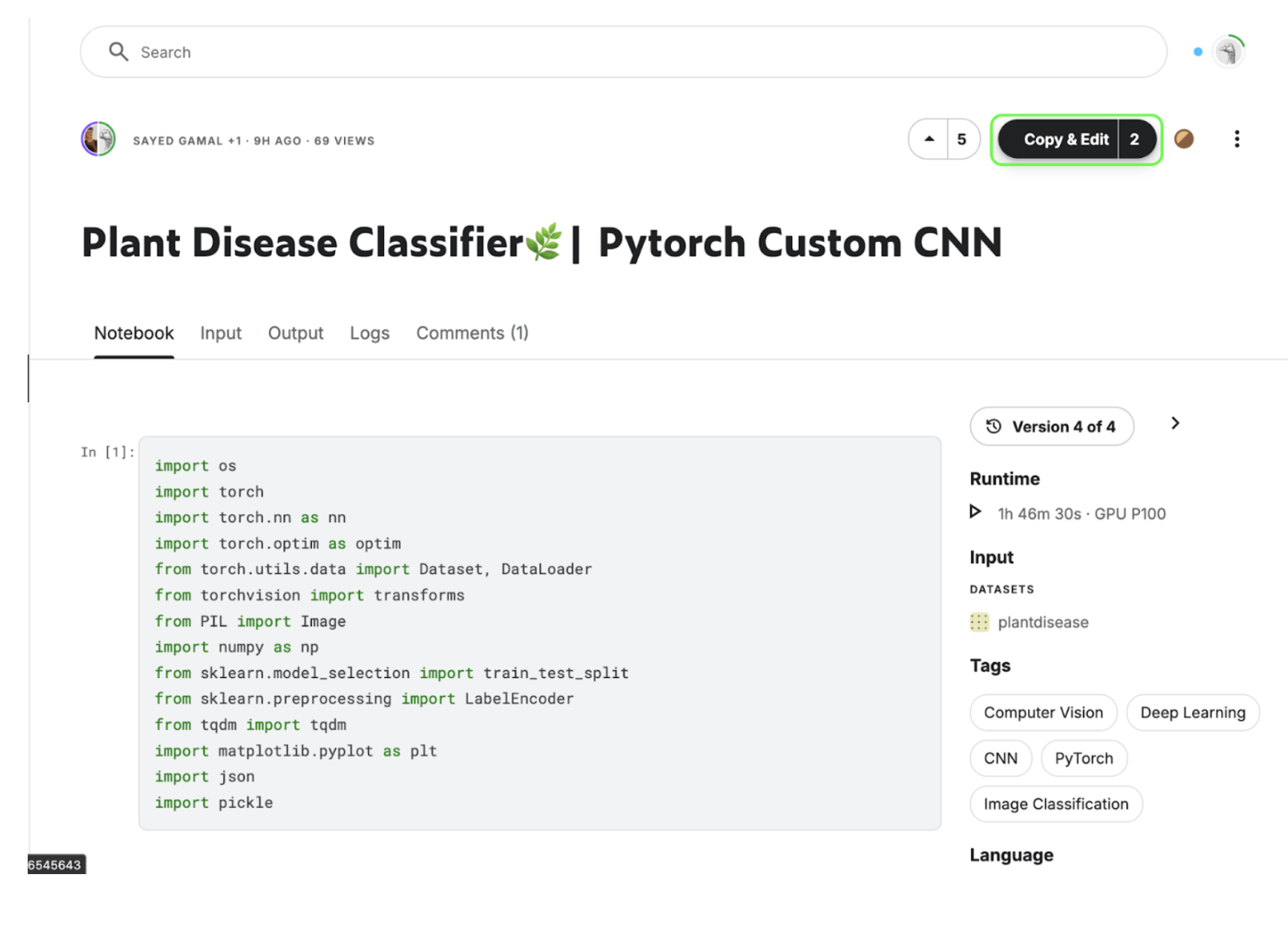
Kaggle Kernels: A Cloud-Based Solution for Data Science
Kaggle Kernels, also known as Notebooks, offer a powerful cloud platform for data science and machine learning. This platform allows users to write, run, and visualize code directly in their browser, eliminating the need for local installations.
Key Benefits of Kaggle Kernels
- No Setup Required: Everything is pre-installed and ready for immediate use.
- Free Computing Resources: Access to CPUs, GPUs, and TPUs at no cost.
- Accessible Anywhere: Work from any device with internet access.
- Integrated Ecosystem: Easy access to datasets, competitions, and community resources.
- Reproducible Research: Shareable documents capture your entire environment.
- Collaboration: Learn from others and share your own projects.
Tutorial Overview
This tutorial will guide you through the essentials of using Kaggle Kernels, from account setup to developing advanced machine learning models.
Prerequisites
- A web browser (Chrome, Firefox, Safari, or Edge)
- Basic knowledge of Python or R (beginners can still follow along)
- An interest in data science and machine learning
Steps to Get Started
1. Creating Your Kaggle Account
- Visit www.kaggle.com.
- Click the “Register” button in the top-right corner.
- Sign up using Google, Facebook, or email.
- Complete your profile with a username, picture, and bio.
- Verify your email via the confirmation link.
2. Navigating the Kaggle Platform
The Kaggle interface includes several key sections:
- Home: Personalized activity feed and recommendations.
- Competitions: Active and past machine learning competitions.
- Datasets: A repository of public datasets.
- Models: Explore different models.
- Code: Access Notebooks.
- Discussion: Community forums.
- Learn: Educational courses.
3. Creating Your First Kernel
To create a new notebook:
- Click “New Notebook” to open a fresh environment.
- Familiarize yourself with the components: Code Editor, Output Area, File Browser, and Settings Panel.
4. Adding Data to Your Kernel
You can add data in three ways:
- From Kaggle Datasets: Click “Add Input,” search for a dataset, and click “Add.”
- From a Competition: Data is automatically available if you created a kernel from a competition.
- Upload Your Own Data: Click “Add data” > “Upload” and select files from your computer (up to 20GB).
5. Writing and Running Code
To run your code:
- Type your code in a code cell.
- Press “Shift+Enter” or click the “Run” button to execute.
- Add new cells as needed.
6. Using GPU/TPU Accelerators
For resource-intensive tasks, select an accelerator in the “Settings” tab:
- None (default CPU)
- GPU (T4 x2)
- GPU P100
- TPU VM (v3-8)
7. Installing Additional Packages
To install packages:
- Use pip in your code.
- Go to “Add-ons” > “Install Dependencies” to enter the package name and version.
8. Saving and Sharing Your Work
To save and share:
- Click “Save Version” to create a snapshot.
- Choose visibility (Public/Private) and share your kernel with a link.
9. Forking and Collaborating
To collaborate:
- Find a public notebook, click “Copy & Edit” to create your version.
- Make changes and save your version.
10. Common Keyboard Shortcuts
Enhance your workflow with these shortcuts:
- Shift+Enter: Run current cell
- Ctrl+Enter: Run current cell without moving
- Alt+Enter: Run current cell and insert new cell below
- Esc+A: Insert cell above
- Esc+B: Insert cell below
- Esc+D,D: Delete current cell
- Esc+M: Change to Markdown cell
- Esc+Y: Change to Code cell
11. Troubleshooting
Common issues include:
- Kernel Timeouts: Sessions terminate after 9 hours of inactivity; save frequently.
- Memory Errors: Reduce data size or use efficient algorithms.
- Package Installation Errors: Check compatibility and try different versions.
Conclusion
Kaggle Kernels provide an excellent platform for learning and experimenting with machine learning. You can access powerful resources for free, collaborate, and participate in competitions to enhance your skills.
Next Steps
- Explore Kaggle Learn for tutorials.
- Join a competition to apply your skills.
- Study public notebooks for insights.
- Share your work for feedback.
Happy coding and machine learning!
Transforming Your Business with AI
Explore how artificial intelligence can enhance your business processes:
- Identify automation opportunities in customer interactions.
- Determine key performance indicators (KPIs) to measure AI impact.
- Select customizable tools that align with your objectives.
- Start with small projects, assess effectiveness, and gradually expand AI usage.
If you need guidance on managing AI in business, contact us at hello@itinai.ru or reach us on Telegram, X, and LinkedIn.

























